
New Photos
May 7, 2006
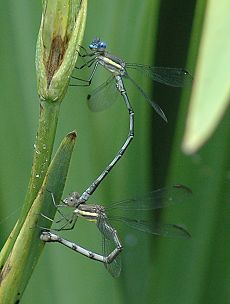 |
|
| With spring and some rain, the dragonflies and damselflies are showing up in large numbers...and reproducing. Here, the male Great Spreadwing, Archilestes grandis, firmly grasps the female by the neck while she coils her abdomen around, stabs a hole in the iris stem, and lays her eggs in the slit she's made. He's determined that the other males hanging around (perched on nearby iris leaves) don't get to mate with her until she's laid eggs. | |
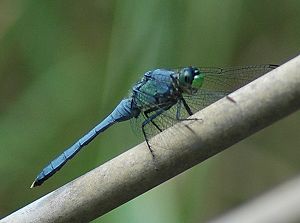 |
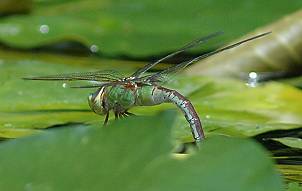 |
| We put some slender bamboo sticks around the lily pond this year to see if dragonflies would perch on them, and this male Eastern Pondhawk, Erythemis simplicicollis, did. | The female Common Green Darner, Anax junius, lays her eggs into the water while perched on a waterlily pad, without the dubious assistance of a male. She was harrassed, when she first came to the pond, by the much smaller Eastern Pondhawk male, but he finally perched and left her alone. |
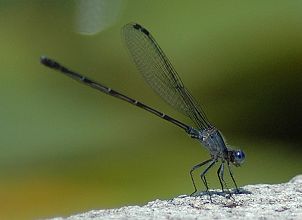 |
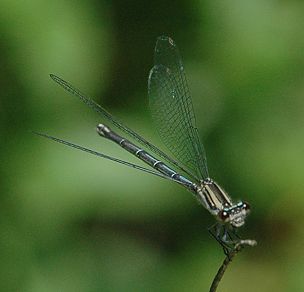 |
| This year I found a species of damselfly I didn't see last year. The male Dusky Dancer, Argia translata (left photo), staked out the lily pond margin before any of the dragonflies. At a slight distance, he looks almost black, and he lacks the bright blue final segments on the abdomen that so many Argia species have. I found the female (right photo) in the creek woods. Both are much more skittish than the Kiowa Dancers I photographed last year, but they're beautiful. | |
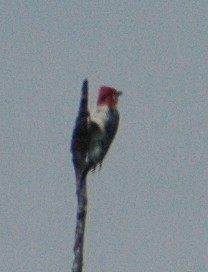 |
|
| We have had several different kinds of woodpecker on the place: red-bellied, ladder-backed, hairy, and, in winter, even a northern flicker. When I heard a woodpecker "whickering" and saw a blob on the tip of a dead tree in the distance, I assumed it was a red-bellied and almost didn't bother to take the picture. Much to my surprise, it wasn't a red-bellied woodpecker at all, but a red-headed one. We are at the very western margin of their terrain. | |
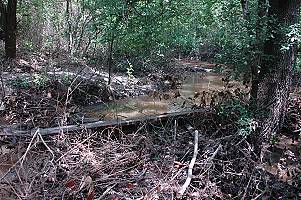 |
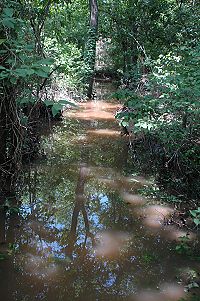 |
| Though floods are damaging, they bring needed water and life to the land. Muddy surface runoff eventually slows down and loses its sediment, making the woods soil thicker and richer. | This overflow channel is part of the main south-fenceline trail, when it's not full of muddy water deeper than my rubber boots are tall. It had already stopped flowing into the main "swamp" and will be clear in another day if it doesn't rain again. |
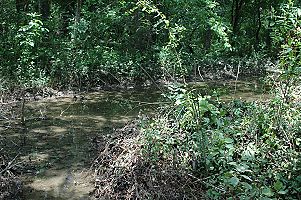 |
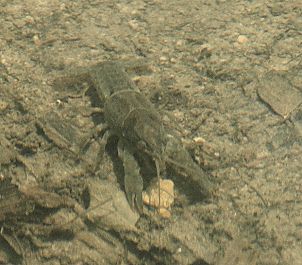 |
| Overflow channels serve as reservoirs after a hard rain, giving the water time to trickle slowly along and become clear while also nourishing the woods. | Here, for instance, is a young crayfish I disturbed by accident, in the "swamp" at the south end of the creek woods, where one of the braided channels is trickling clear water into the lower, still muddy, overflow channel. |
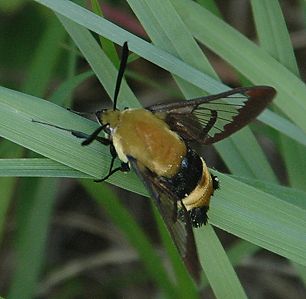 |
|
| Another discovery this week was a Snowberry Clearwing moth, Hemaris diffinis, whose larvae feed on honeysuckle (and the woods are full of unwanted Japanese honeysuckle...come on, lay some eggs.) This was the first one I saw; I've now seen others in and around the honeysuckle vines. | |
![]()

